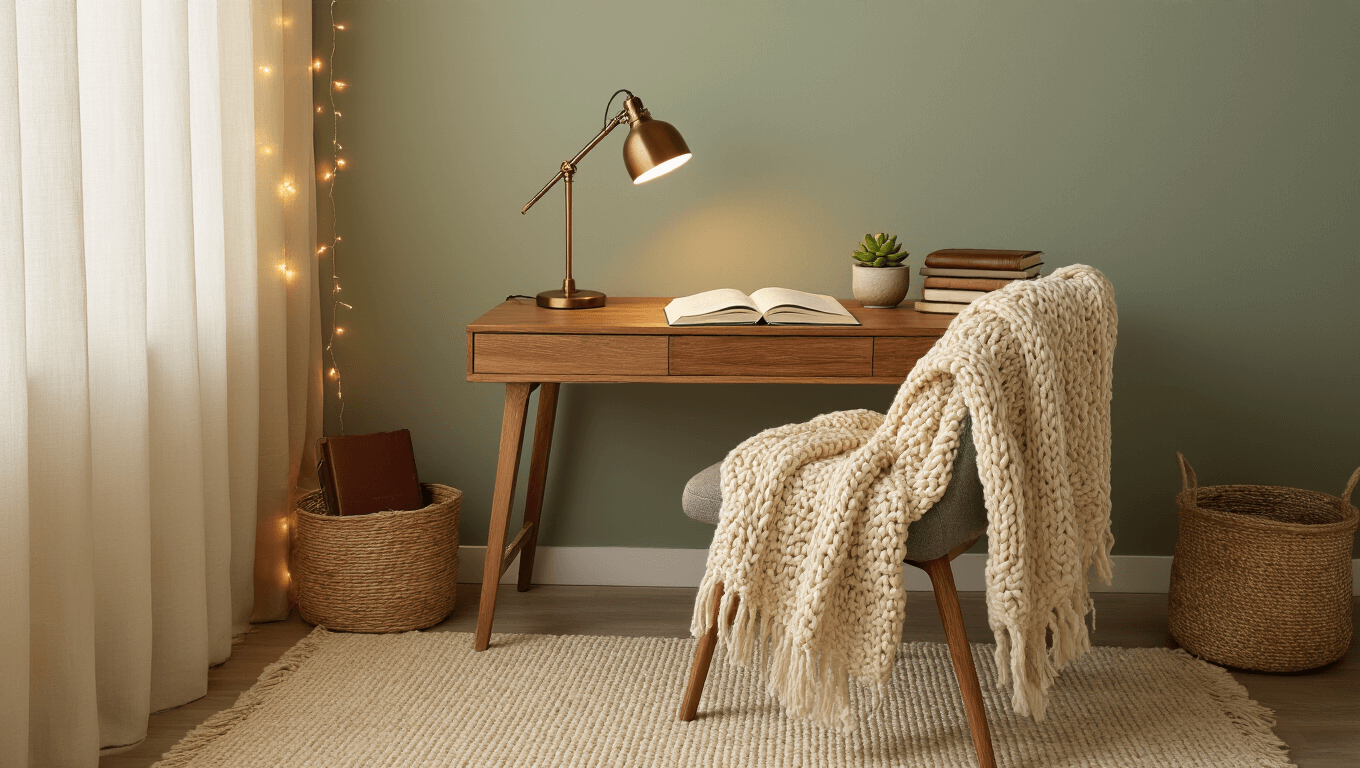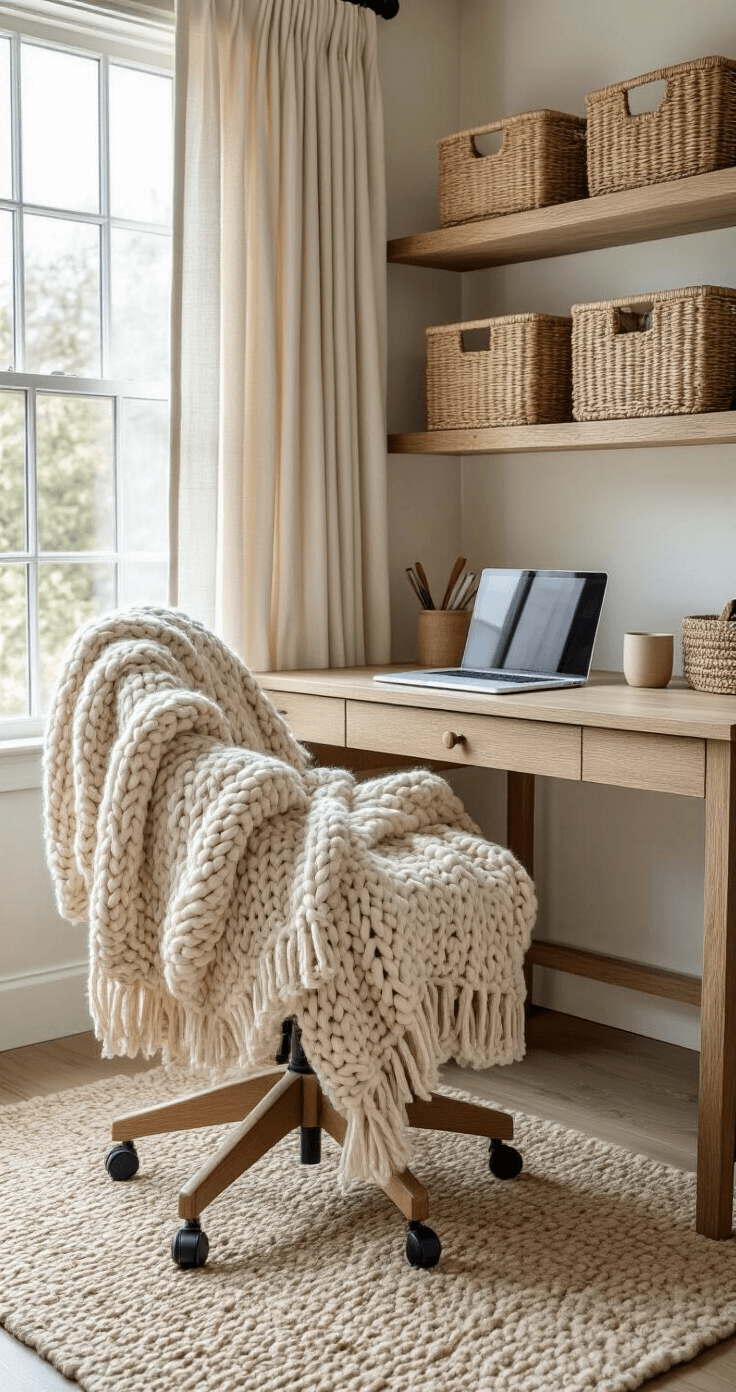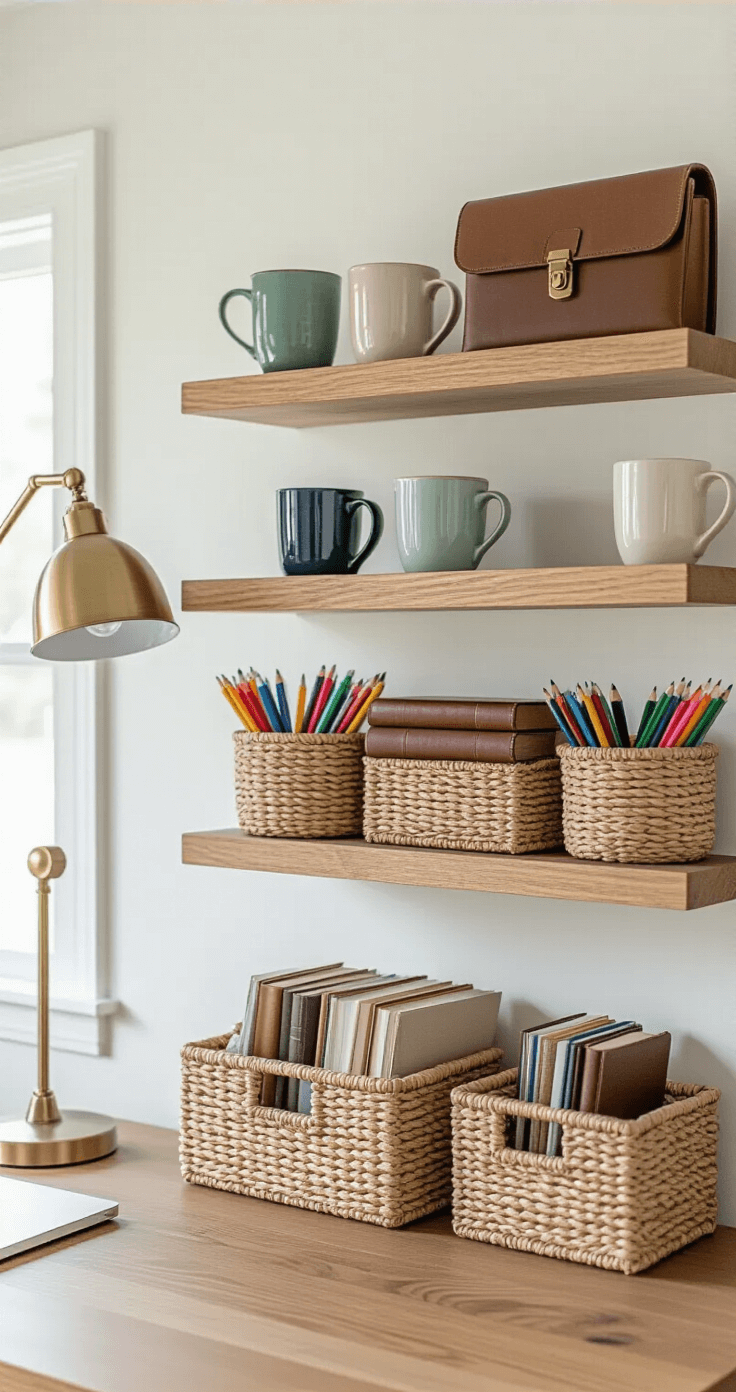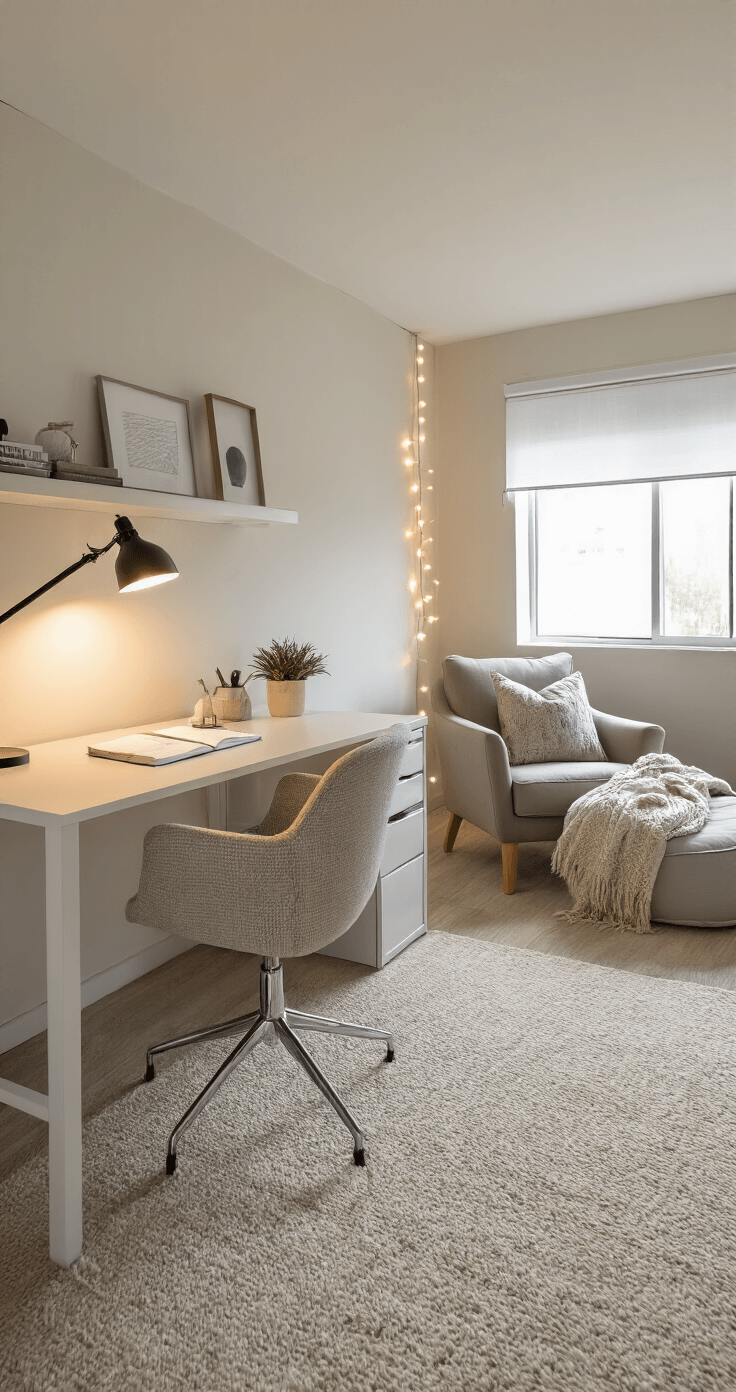This post may contain affiliate links. Please see my disclosure policy for details.
Creating a Cozy Study Aesthetic That Actually Makes You Want to Study
Contents
- Creating a Cozy Study Aesthetic That Actually Makes You Want to Study
- Why Your Current Study Space Isn’t Working
- The Foundation: Lighting That Doesn’t Make You Want to Run Away
- Color Psychology: Why Your Wall Color Affects Your Brain
- Texture Layering: The Secret to Instant Coziness
- Smart Organization That Actually Works
- The Psychology of Personal Touches
- Creating Zones for Different Activities
A cozy study aesthetic isn’t just about pretty Instagram photos—it’s about creating a space that genuinely makes you want to curl up with a book or tackle that work project you’ve been avoiding.
I’ve spent years transforming cold, uninspiring study spaces into warm havens that boost both productivity and mood. The secret? It’s not about expensive furniture or perfect organization. It’s about layering comfort with function in ways that make your brain happy.
Why Your Current Study Space Isn’t Working
Let me guess—you’re staring at a cluttered desk under harsh fluorescent lighting, wondering why you can’t focus for more than ten minutes. Sound familiar?
Most study spaces fail because they prioritize function over feeling. But here’s what I’ve learned: comfort drives productivity, not the other way around.
When I first started working from home, my “office” was a kitchen table under a buzzing overhead light. My focus lasted about as long as a goldfish’s memory. Everything changed when I realized that creating the right atmosphere was just as important as having the right tools.
The Foundation: Lighting That Doesn’t Make You Want to Run Away
Harsh lighting is the enemy of cozy studying.
I cannot stress this enough—ditch those overhead fluorescents immediately. Your eyes and your mood will thank you.
Here’s my lighting hierarchy:
- Natural light first – Position your desk near a window if possible
- Warm desk lamps second – Look for bulbs around 2700K-3000K temperature
- Soft string lights for ambiance – These create instant coziness without being distracting
- Candles for ultimate relaxation – But only when you’re reading, not working with papers
I learned this the hard way when I spent three months squinting at textbooks under a bright white desk lamp. My productivity plummeted, and I constantly felt on edge. The moment I switched to a warm-toned desk lamp, everything changed. Suddenly, studying felt less like torture and more like a cozy evening activity.
Color Psychology: Why Your Wall Color Affects Your Brain
Colors aren’t just decoration—they’re mood manipulators.
After experimenting with various color schemes, I’ve found that certain colors literally change how my brain works:
Colors that enhance focus:
- Soft blues and greens (naturally calming)
- Warm beiges and creams (non-distracting neutrals)
- Gentle yellows (energizing without being overwhelming)
Colors to avoid:
- Bright reds (too stimulating)
- Stark whites (can feel clinical)
- Dark colors without proper lighting (can feel depressing)
One semester, I painted an accent wall behind my desk in a soft sage green. My study sessions immediately became longer and more peaceful. The color literally helped my nervous system relax while keeping my mind alert.
Texture Layering: The Secret to Instant Coziness
This is where the magic happens. Texture is what transforms a functional space into a haven.
My go-to texture formula:
- Base layer: Soft area rug under your desk or reading chair
- Comfort layer: Throw blanket draped over your chair
- Touch layer: A few cushions for back support and visual softness
- Visual layer: Natural elements like wood, plants, or woven baskets
The key is mixing materials. I combine a chunky knit throw with a smooth wooden desk, add a woven basket for storage, and include a soft cushion on my chair. These different textures create visual interest without being overwhelming.
Smart Organization That Actually Works
Clutter is the arch-enemy of the cozy study aesthetic.
But here’s the thing—organization doesn’t mean everything has to be hidden away. Some items can be both functional and decorative.
My favorite dual-purpose organizers:
- Beautiful notebooks that can stay visible on shelves
- Vintage mugs that hold pens and pencils
- Natural baskets for hiding less attractive supplies
- Floating shelves that display books like art
I keep a “15-minute reset” rule in my study space. Every evening, I spend 15 minutes putting things back in their designated spots. This prevents the overwhelming mess that kills productivity and ruins the aesthetic.
The Psychology of Personal Touches
Generic spaces don’t inspire anyone.
Your study space needs elements that reflect who you are. But—and this is crucial—personal touches should enhance focus, not distract from it.
Smart personal additions:
- A few favorite books displayed spine-out
- One meaningful photo in a simple frame
- A plant that you actually know how to keep alive
- Art that makes you feel calm and motivated
I have exactly three personal items visible in my study space: a small succulent, a photo of my favorite hiking spot, and my collection of vintage journals. These items make the space feel like mine without creating visual chaos.
Creating Zones for Different Activities
Not all studying requires the same environment.
I’ve learned to create micro-zones within my study space:
Deep focus zone:
-
<li













